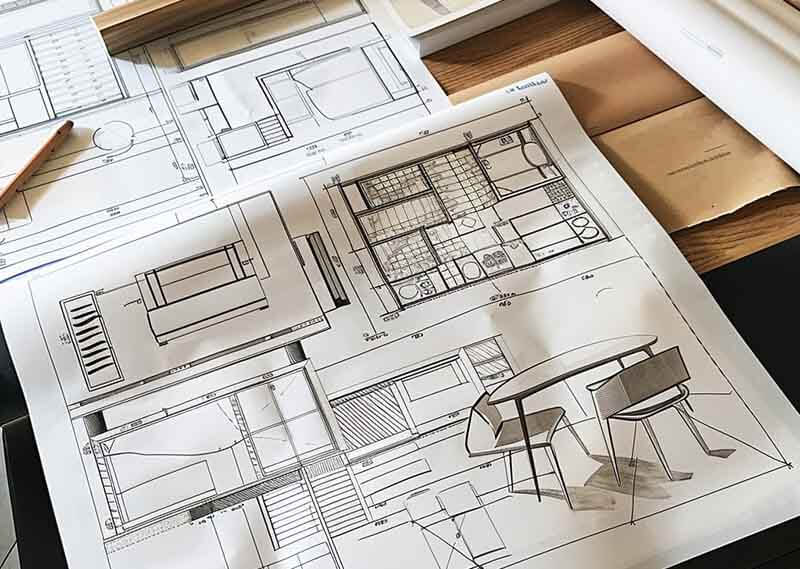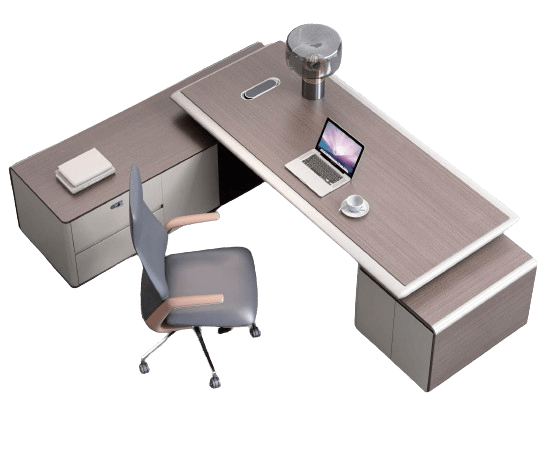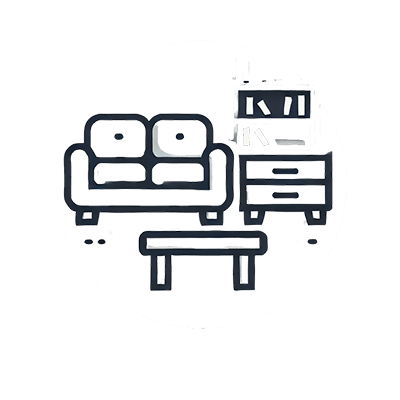1. Introduction
China has become a leading source for importing furniture due to its competitive pricing, extensive variety, and strong manufacturing capabilities. Importing furniture from China can lead to significant cost savings, often up to 50%, and provides access to a wide range of high-quality products. This guide will walk you through the essential steps for successfully importing furniture from China, focusing on key areas such as:

- Market Research: Understanding market trends, consumer preferences, and identifying reliable suppliers.
- Supplier Selection: Tips for choosing trustworthy and efficient manufacturers.
- Quality Control: Procedures to ensure that the furniture meets high standards and complies with safety regulations.
- Logistics and Shipping: Effective management of transportation, packaging, and customs processes to ensure timely and secure delivery.
- Customs Compliance: Navigating the complexities of import regulations, duties, and taxes.
By following these guidelines, you can efficiently manage the intricacies of the import process, minimize risks, and capitalize on the benefits of sourcing furniture from China, ensuring that your business achieves success in the global marketplace.
2. Initial Preparations
To successfully import furniture from China, thorough preparation is key. Here are the essential steps:

- Market Research: Analyze your target market to understand demand trends and consumer preferences. Identify which types of furniture are in high demand and study market trends.
- Finding Reliable Suppliers: Use B2B platforms like Alibaba, Made-in-China, and Global Sources to find reputable suppliers. Research their reviews and verify their credentials. For more details, you can explore this furniture supplier.
- Supplier Selection: Choose suppliers with a good reputation and the ability to meet your quality standards. Consider visiting trade fairs like the Canton Fair to meet potential suppliers in person.
- Understanding Import Regulations: Familiarize yourself with the import regulations and documentation requirements of your country to ensure compliance and avoid potential customs issues. Know the necessary documents, such as commercial invoices and packing lists, that you will need for customs clearance.
Proper preparation helps you streamline the import process, avoid delays, and ensure that you comply with all relevant regulations.
3. Defining Needs and Specifications
Clearly defining your needs and specifications is crucial for a successful import process. Here are the key steps:
- Identify Product Requirements: Determine the types of furniture, materials, dimensions, and design features you need. This helps ensure the supplier understands your exact requirements.
- Set Quality Standards: Establish detailed quality standards, including material quality, durability, and compliance with safety regulations. Specify these in your contract to avoid misunderstandings.
- Create a Detailed Specification Sheet: Provide a comprehensive product specification sheet that includes all relevant details such as dimensions, materials, colors, and any custom features. Visual aids like sketches or photos can help clarify your expectations.
- Consider Environmental and Safety Regulations: Ensure that the furniture complies with environmental standards and safety regulations in your target market, such as REACH and FSC certifications.
- Evaluate Manufacturing Capabilities: Assess potential suppliers’ ability to meet your specifications and quality standards. This can include factory visits or requesting detailed information about their production processes.
- Sample Approval and Prototyping: Request samples or prototypes before placing a large order to ensure the products meet your quality and design specifications.
By clearly defining your needs and specifications, you can streamline the procurement process, ensure consistent quality, and reduce risks.
4. Purchasing and Contracts

Securing a good purchase agreement and contract is critical for successful furniture importation from China. Here are the essential steps:
- Draft a Detailed Purchase Contract: Include comprehensive details such as product specifications, quantities, pricing, payment terms, delivery schedules, and quality standards. Clearly outline responsibilities and penalties for non-compliance to protect your interests and ensure clear communication between you and the supplier.
- Negotiate Favorable Payment Terms: Aim for terms that minimize your financial risk. Commonly, you might pay 30% upfront as a deposit and the remaining 70% upon shipment. Discuss options for more flexible terms, such as extended payment periods or partial payments against shipping documents.
- Specify Quality Control Requirements: Include detailed quality control measures in your contract, such as pre-production samples, mid-production inspections, and final product checks before shipment. Ensure that the contract allows for penalties or compensation if the quality does not meet the agreed standards.
- Address Potential Issues: Anticipate potential problems like production delays, quality discrepancies, and shipping damage. Include clauses that define how these issues will be resolved, including timelines for dispute resolution and methods for compensating losses.
- Detail Shipping and Logistics Arrangements: Clearly specify who is responsible for shipping costs, insurance, and logistics management. This includes defining the terms of delivery (such as FOB or CIF) and ensuring that both parties understand their responsibilities in managing and insuring the shipment.
- Compliance with Legal Requirements: Ensure the contract complies with both Chinese laws and the import regulations of your country. This might involve consulting legal experts to ensure all contractual terms are enforceable and meet international trade standards.
By carefully drafting and negotiating your purchase contract, you can protect your investment, ensure that you receive high-quality products, and establish a strong foundation for a successful import operation.
5. Payment Methods

Choosing the right payment method is crucial for minimizing risk and ensuring smooth transactions when importing furniture from China. Here are the key options and considerations:
- Letter of Credit (LoC)
- Description: This method provides a high level of security for both parties. The buyer’s bank guarantees payment to the supplier once specific terms, such as shipping documents, are met.
- Pros: Reduces risk of non-payment or fraud. Ideal for large transactions due to the bank’s involvement.
- Cons: Involves significant paperwork and higher bank fees. Typically used for amounts over $50,000 due to complexity.
- Open Account
- Description: The supplier ships the furniture, and the buyer pays later, usually within a set period after delivery (e.g., 30, 60, or 90 days).
- Pros: Beneficial for the buyer’s cash flow since payment is due after receiving and inspecting the goods.
- Cons: Higher risk for the supplier. Best for established relationships where trust has been built.
- Documentary Collection
- Description: The supplier’s bank sends shipping documents to the buyer’s bank. The buyer gets these documents, necessary to claim the goods, after making payment or accepting a bill of exchange.
- Pros: Balances security and cost. Popular for medium-sized transactions.
- Cons: Less risky than an open account but requires trust and a solid relationship between the buyer and supplier.
- Bank Transfer
- Description: This involves directly transferring funds to the supplier’s bank account.
- Pros: Fast and convenient.
- Cons: Offers less protection, especially if full payment is required before shipment. Suitable for smaller transactions or with well-established suppliers.
- Western Union
- Description: Useful for small, urgent payments, allowing quick money transfers between individuals.
- Pros: Fast and effective for urgent needs.
- Cons: Not suitable for large transactions due to limited security and higher risk of fraud or disputes.
Tips for Secure Transactions:
- Use Escrow Services
- Description: These services hold the payment until you confirm receipt and satisfaction with the goods.
- Benefit: Adds an extra layer of security by ensuring the supplier is only paid when you are satisfied with the furniture.
- Negotiate Payment Terms
- Description: Aim for terms that minimize upfront payments and shift some financial risk to the supplier.
- Common Arrangement: A typical setup is paying a 30% deposit upfront and the remaining 70% upon shipment or receipt of goods.
- Benefit: Helps protect your cash flow and ensures the supplier fulfills the order as agreed.
- Monitor Transactions and Documentation
- Description: Keep detailed records of all transactions and ensure payments are made according to the agreed schedule.
- Benefit: Regular verification of documentation helps avoid misunderstandings or disputes.
- Consider Currency Fluctuations
- Description: Be aware of potential changes in currency exchange rates that could affect the final cost of your purchase.
- Solution: Using a forward contract can help lock in exchange rates and protect against adverse movements.
By carefully selecting the appropriate payment method and negotiating favorable terms, you can protect your financial interests and ensure a smooth import process. Proper planning and attention to payment details are essential for maintaining healthy cash flow and building a trustworthy relationship with your suppliers.
6. Quality Control

Ensuring high-quality standards is crucial when importing furniture from China. Here are the key steps:
- Pre-Production Inspection: Request samples or prototypes to verify that they meet your specifications before mass production begins. This step helps identify any issues early and ensures the final products match your requirements.
- During Production Inspection: Conduct regular inspections during production to check for consistency and quality. This helps catch any deviations from the agreed standards and ensures problems are addressed promptly.
- Pre-Shipment Inspection: Before shipping, perform a final quality check to ensure the furniture meets your specifications. This includes verifying dimensions, materials, and workmanship to prevent any surprises upon arrival.
- Use Third-Party Inspection Services: Hire reputable third-party inspection companies, such as Bureau Veritas or SGS, to provide unbiased evaluations of the furniture’s quality and compliance with your standards. This helps reduce the risk of receiving defective products.
- Detailed Quality Checklist: Develop a comprehensive quality checklist that includes all necessary specifications, such as material quality, dimensions, and compliance with safety standards. This helps ensure that your suppliers meet your exact requirements.
- Packaging Inspection: Ensure that the furniture is properly packed to avoid damage during transit. Verify that packaging materials are durable and that items are secured to prevent movement and breakage.
Common Quality Issues:
- Defects and Non-Compliance: Common problems include poor craftsmanship, incorrect dimensions, and the use of substandard materials. Regular inspections and a detailed quality checklist can help mitigate these issues.
- Damage During Shipping: Furniture can be damaged if not properly packed. Ensure that your suppliers use high-quality packaging materials and follow your packaging instructions to protect the goods during transit.
By implementing these quality control measures, you can ensure that the furniture you import from China meets your quality standards and reduces the risk of costly returns or repairs.
7. Logistics and Shipping
Efficient logistics and shipping are crucial for successfully importing furniture from China. Follow these key steps:

- Choose the Right Shipping Method: Decide between Full Container Load (FCL) for large shipments or Less than Container Load (LCL) for smaller ones. FCL is cost-effective for bulk orders and reduces the risk of damage since the container is not shared with other goods. LCL is better for smaller shipments but may increase the risk of damage due to handling multiple loads.
- Select Reliable Freight Forwarders: Partner with reputable freight forwarders who can manage the complexities of international shipping. A good forwarder will handle the logistics, customs documentation, and ensure your furniture reaches its destination safely.
- Manage Shipping Documentation: Prepare all necessary documents, including the bill of lading, commercial invoice, packing list, and certificate of origin. Accurate documentation is essential for smooth customs clearance and to avoid delays and extra costs.
- Ensure Proper Packaging: Proper packaging is crucial to protect furniture during transit. Use high-quality materials and secure items to prevent movement and damage. Ensure that the packaging meets international shipping standards to reduce the risk of damage.
- Consider Insurance: Purchase comprehensive freight insurance to protect against risks such as damage, loss, or theft during transit. This ensures that you are covered in case of any unforeseen issues and can claim compensation if needed.
- Plan for Customs Clearance: Understand the customs regulations and requirements for both China and your destination country. This includes tariffs, duties, and necessary import permits. Hiring a customs broker can help navigate these complexities and ensure compliance.
Common Issues in Logistics:
- Delays in Shipping: Delays can occur due to production issues, customs hold-ups, or logistical bottlenecks. Plan for potential delays by building extra time into your delivery schedule and maintaining open communication with your logistics provider.
- Damage During Transit: Improper packaging or handling can lead to damage. Ensure that your goods are well-packed and choose reliable shipping partners to minimize this risk.
By following these steps, you can manage the logistics and shipping process efficiently, ensuring that your furniture imports arrive on time and in good condition. This helps maintain your supply chain’s integrity and keeps your customers satisfied.
8. Customs and Taxation
Understanding customs and taxation is crucial for a smooth import process. Here are the key points:
- Import Duties and Taxes: Each country has specific tariffs and taxes on imported goods. Identify the Harmonized System (HS) code for your furniture, which determines the duty rate. This helps you estimate the total cost, including import duties and value-added tax (VAT) or sales tax.
- Required Documentation: Prepare essential documents such as the commercial invoice, bill of lading, packing list, and certificate of origin. These documents are necessary for customs clearance and must be accurate and complete to avoid delays.
- Customs Clearance Process: Submit all required documentation to customs authorities, who will assess the goods and calculate duties and taxes. Ensure you understand the procedures for your destination country to facilitate smooth clearance.
- Compliance with Regulations: Ensure your furniture complies with all import regulations, including safety and environmental standards. This may involve specific labeling requirements and certifications, such as meeting fire safety standards or using environmentally friendly materials.
- Hiring a Customs Broker: Consider hiring a customs broker to navigate complex customs regulations. A broker can help with documentation, duty calculations, and ensuring compliance with import laws, saving you time and reducing the risk of errors.

Common Challenges in Customs:
- Documentation Errors: Incorrect or incomplete documents can lead to delays and additional costs. Double-check all paperwork before submission to avoid these issues.
- Unexpected Duties and Taxes: Be aware of potential changes in duty rates or taxes that can affect your costs. Stay updated on import regulations to avoid surprises.
By understanding the customs and taxation requirements and preparing accordingly, you can ensure a smoother import process and avoid costly delays. Proper planning and compliance are key to successful international trade.
9. Common Challenges and Solutions
Importing furniture from China involves several challenges. Here are the main issues and solutions:
- Quality Issues: It’s common to encounter quality discrepancies, such as defects or variations from specifications. To address this, implement strict quality control measures, including pre-production, during production, and pre-shipment inspections to ensure standards are met.
- Shipping Delays: Delays can occur due to production hold-ups, logistics issues, or customs clearance problems. Mitigate this risk by planning for potential delays, using reliable freight forwarders, and maintaining open communication with your suppliers and logistics partners.
- Customs and Compliance: Navigating customs regulations can be complex and time-consuming. Ensure all documentation is complete and accurate, and consider hiring a customs broker to help with compliance and expedite the clearance process.
- Language Barriers: Miscommunications can lead to errors in specifications or delivery. Overcome this by using clear, written communication and considering the assistance of a bilingual agent or professional translator.
- Supplier Reliability: Issues such as delays or inconsistent quality can arise from unreliable suppliers. Select suppliers carefully based on their track record, and establish strong relationships to ensure better service and reliability.
- Handling Disputes: Disputes over quality, delivery, or payment can occur. Include clear dispute resolution clauses in your contracts and maintain a good relationship with your suppliers to resolve issues amicably.

Strategies for Success:
- Regular Inspections: Conducting regular quality inspections helps catch problems early and ensures the products meet your standards.
- Build Relationships: Developing strong relationships with suppliers can lead to better communication and more favorable terms.
- Use Professional Services: Hiring a customs broker or quality control agent can help navigate complex regulations and ensure compliance.
By addressing these common challenges with proactive strategies, you can ensure a smoother import process and maintain high-quality standards for your imported furniture.
10. Conclusion and Recommendations
Importing furniture from China offers substantial benefits, including cost savings and access to a diverse range of products. To succeed, follow these key steps:
- Conduct Market Research: Understand your target market’s needs and identify reliable suppliers to ensure you source the right products.
- Establish Clear Specifications: Define detailed product requirements and quality standards to ensure consistency and compliance.
- Secure a Comprehensive Contract: Negotiate clear terms that cover payment, delivery, and quality control to protect your interests.
- Choose the Right Payment Method: Select a payment method that minimizes risk and supports a smooth transaction process.
- Implement Quality Control: Regular inspections and clear quality criteria help maintain product standards and avoid issues.
- Manage Logistics Effectively: Plan your shipping and documentation to streamline customs clearance and reduce delays.
- Stay Compliant: Ensure all regulatory requirements are met to avoid complications at customs.
By following these steps, you can mitigate risks and streamline the process of importing furniture from China, ensuring a successful and profitable operation. Your diligence and planning will pay off, leading to a smooth import process and high-quality products for your customers. For more details, you can explore this furniture manufacturer.











